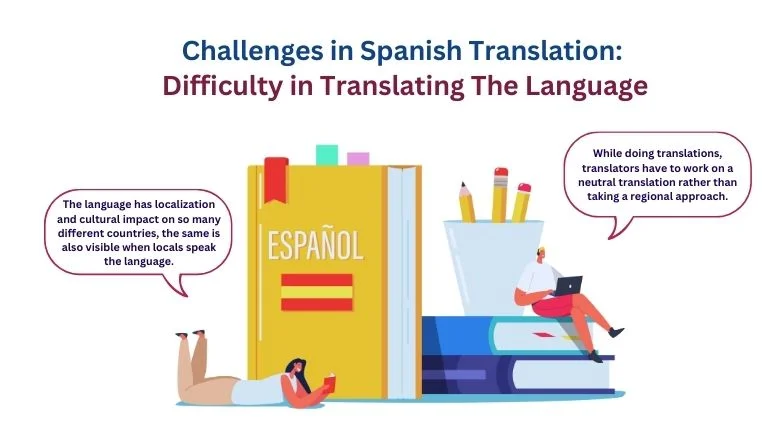
The language has evolved from the spoken Latin of the Iberian Peninsula area of Europe. The oldest available texts of the language have been found from the 9th century and the more systematic one found is available from the 13th century. 75% of the vocab of the language is derived from Latin and Ancient Greek.
Present Day Scenario of the Language: Spanish is the third most taught language in the world after English and French. After Mandarin Chinese, Spanish is the second most popular native language used across the globe and the fourth most used language overall. The language has nearly 500 million native speakers. Having such a vast reach has increased the demand for learning the language.
Language is also one of the six official languages of the UN. It is mainly spoken in America and Spain and is also the official language of 20 countries. The largest population of people speaking Spanish is in Mexico.
Types of Translation-
1. Written Translation: The translation of written content from one language to another is called Literary Translation. This type of translation requires experience and knowledge of both languages, to keep the essence intact.
2. Video and Film Translation: With increasing globalization, the entertainment industry is also expanding. People are now consuming content from across the globe, for which translation is the crucial step.
3. Translation of Medical and Legal Documents: People today are travelling for so many different reasons, a few of them are for Heath treatments and Business growth. Spanish is the official language of so many countries, People will need to get translated form of their medical and legal documents.
Challenges in Spanish Translation –
● Since Spanish is a lengthy language in comparison to other languages by an estimate of 30% while doing translation from any language to Spanish, the content increases and vice versa.
● The language has localization and cultural impact on so many different countries, the same is also visible when locals speak the language. While doing translations, translators have to work on a neutral translation rather than taking a regional approach.
Difficulty in Translation:
Followings are the different factors and points translators find difficult for the Spanish Translation –
1. Difference in the Placement of Adjectives
Being a different language, grammar is also different than another language, for example, if we take English, the placement of adjectives in a sentence will be different in Spanish than in English.
2. Difference in Form of Verb
In Spanish, there are 15 types of verbs whereas in English there are mainly 3 types of verbs. In situations like these, it becomes difficult for the translators to convey the exact message from one language to another.
3. Difference in Pronunciation
Words in the Spanish language sound just like how they are written, unlike in the English language. So, for translators sometimes it becomes confusing for another language like English where the pronunciation is different than the written word.
4. Double Letter Combination
In Spanish there are only 3 double letter combinations, which are cc, rr, and ll, however in a language like English there are so many, translators also face this problem while translating, they forget to remove one letter for English to Spanish Translation .
5. Lengthy Translations
As per suggested estimates, Spanish is 30% longer than English, so for an equal length translation, a professional should be hired.
6. Limitation of Addressing Pronouns
Just like Hindi, the Spanish language also has different pronouns for younger and older people unlike English, which means during the translation the message sometimes gets distorted.
7. Accents and Localization
A language is most affected by the local influence of people on it. Even being a single language, Spanish has a little different tone, accent, and words as per the country. Because of this translation becomes a little hard to match up the local accents and vocab, therefore translators adopt a neutral reach towards the translation.
8. Knowledge of Culture
The content for translation is half language and half culture. For a translator, it is very helpful to have a good knowledge of both cultures. It is important for a translator to maintain the meaning of the message.
Conclusion
Spanish is a language, prominently used by its speakers on various platforms, which creates a huge demand for Spanish translation and vice versa. Being a language spoken by more than 500 million people, Spanish has very different versions and variations itself. The above mentioned are a few limitations and challenges translators face while doing the translation. All these factors show how having knowledge of two languages is not enough for the translation of languages like Spanish, skill, and experience are also required for proper and error-free translation. Spanish translation is not as easy as it looks, especially the written one.
Also Read: Spanish Website Translation: How Does It Affect Your Business Growth?
For proper error-free translation services, one can hire Somya Translators, where we provide translation services by native and professional translators assuring quality work at affordable rates. For more information, contact us on +91-9990094796 and get a free quotation.







